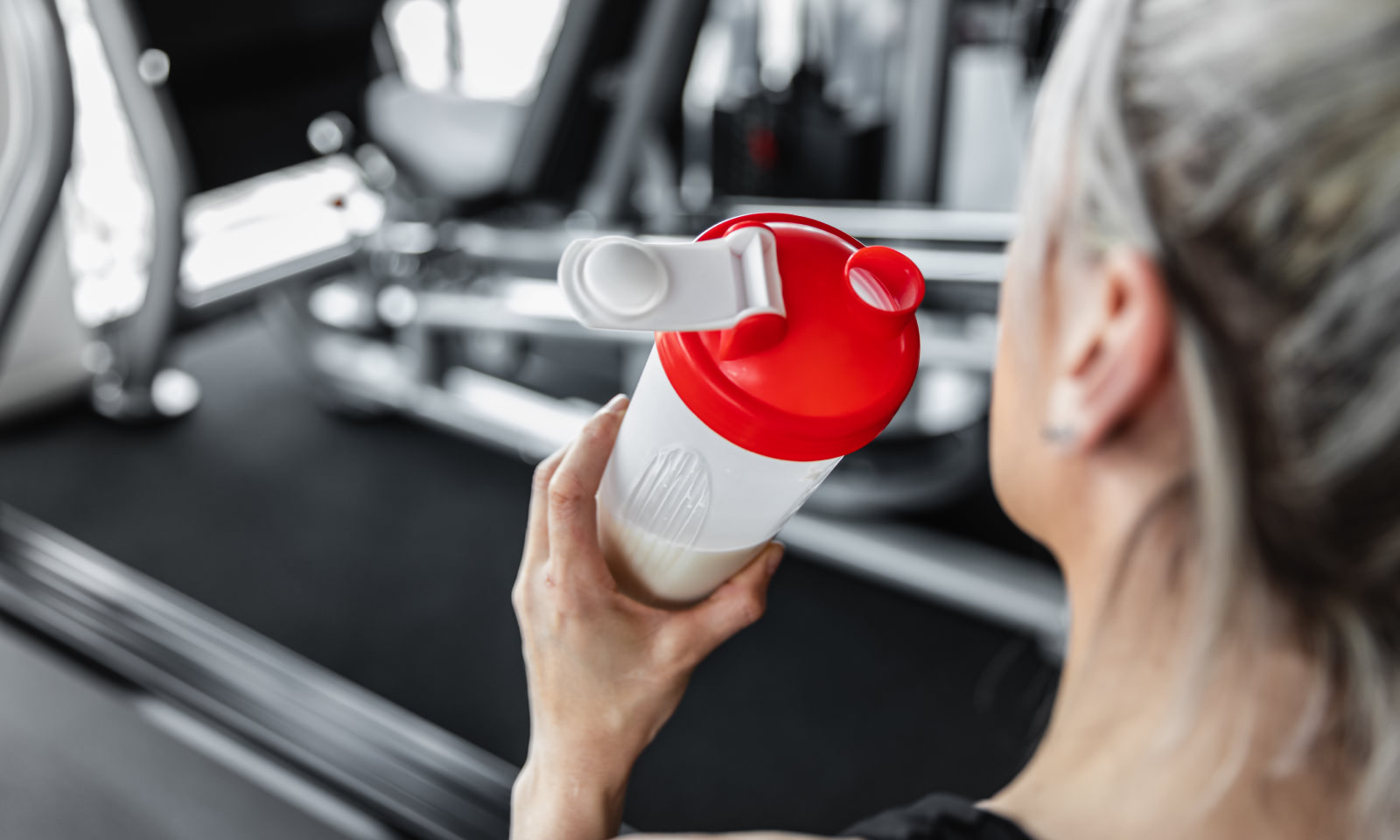A conversation with Dr Jia Jiet Lim, Registered Nutritionist and Clinical Researcher.
Dr Jia Jiet Lim is a nutritionist and a clinical researcher specialising in the role of dietary protein within nutrition. As an independent researcher and future thought leader, we posed four commonly asked product development questions to Dr Lim. We felt these four questions may also be of relevance to everyday consumers of fortified protein products.
One: What’s the Role of Protein Within Performance Nutrition?
Key message: The amino acids from dietary protein are critical molecules/building blocks/components in muscle development.
Dietary protein is digested in the stomach and absorbed by the intestine into the circulatory system, in turn supplying amino acids to different parts of the body where there is a demand.
High-intensity exercises and the resulting wear and tear of skeletal muscle increase the demand for amino acids, one of the most important components for building the protein of muscle fibre.
The arrival of amino acids in the skeletal muscle, along with the degradation of muscle protein following exercises, supports muscle protein turnover. When the muscle protein synthesis is greater than muscle protein degradation, the net result is an increase in muscle mass, which is the favored outcome for performance nutrition.
Two: What Are the Ideal Characteristics of Protein for Performance Nutrition
Key message: Both quantity and quality of protein are important considerations, with amino acid composition being a key indicator of protein quality.
Protein quantity. Whilst the recommended protein intake for an average healthy adult is 0.8 grams of protein per kg of body weight (g/kg), highly active individuals can consume up to 1.2–1.6 g/kg of protein without adverse effects due to the high demand for muscle protein turnover.
Protein quality. Protein quality depends on the amino acid composition and digestibility of protein. Many refined animal- and plant-based protein powder beverages have very high digestibility. High digestibility allows almost all ingested protein to be absorbed, while the beverage format accelerates digestion and absorption Taking whey protein powder beverage as an example, circulatory amino acid concentrations peak between 30–60 minutes after ingesting a standard serving.
Amino Acid Composition. Importantly, the amino acid composition is different between protein sources. In performance nutrition, a rapid rise in the amino acid leucine in the circulatory system is favorable. According to the leucine-trigger hypothesis, this acts as a “switch” to trigger muscle protein synthesis. Leucine, along with other branched-chain amino acids, serves as important building blocks for muscle fibre.
Furthermore, dietary protein which can provide a balanced range of essential amino acids (amino acids that cannot be synthesised naturally by the human body) further support muscle protein synthesis, until one of the essential amino acids becomes limited.

Three: What Are the Optimal Sources of Such Protein for Performance Nutrition?
Key message: Three key points are tabled by Dr Lim (i) It must be a beverage; (ii) It must contain a high leucine concentration; (iii) It must have a balanced essential amino acid profile. The optimal sources of protein are those with the appropriate amino acid profile and digestibility.
Whey protein beverage remains the most popular protein source for performance nutrition as it is (i) easy on digestion and absorption, (ii) rich in leucine, and branched-chain amino acids, and (iii) has a balanced range of essential amino acids that support muscle protein synthesis. Whey protein is derived from milk and is frequently shown to be superior to casein protein (another common milk protein) in muscle protein synthesis following resistance training, especially in older adults. This is because casein is slowly digested and unable to supply an instant boost of amino acids to the circulatory system. However, a landmark study shows leucine is slowly absorbed and released into the circulatory system over 7 hours, potentially helping with slowing down muscle protein degradation when at rest.
Milk protein beverage (consisting of 20% whey protein + 80% casein protein) is one of the most common dairy protein powders, selling at a much lower cost than whey protein powder. It is not frequently promoted for performance nutrition as it is lower in leucine relative to whey protein. However, milk protein powder beverage has similar potency as whey protein powder beverage in stimulating muscle protein synthesis at a resting state under the iso-protein condition. Emerging evidence also shows that the bioavailability of milk protein powder beverages is at least comparable to whey protein powder beverages.
Plant proteins beverages are gaining popularity and are relatively more sustainable than dairy proteins. Refined soy protein powder is most similar to refined whey protein powder in terms of protein quality. Although whey protein is likely superior to soy protein in the magnitude of muscle protein synthesis; whey protein does not guarantee greater muscle gain in the long term relative to soy protein as long-term muscle gain is a net outcome of muscle protein synthesis and degradation. Lifestyle when not exercising is also a determinant for overall muscle gain.
Four: In Your Opinion, What Should Be Considered When Formulating a Performance Nutrition Product?
Key message: There are several interconnected variables to be considered based on the primary and secondary benefits of a performance nutrition product.
Within performance nutrition, the primary benefits generally associated with muscle gains, endurance and or recovery. The secondary benefits refer to its influence on other aspects of human metabolism and environmental impact of the products (sustainability).
To briefly touch on the food product development point of view, the sensory aspects, solubility, viscosity, foaming ability, acid stability, etc are also considerations for selecting suitable protein powders to formulate the final product.

Purely from a nutritional perspective, I would consider the following variables:
Ensure products are fit for purpose: The background physical activity level of your target consumers has a direct impact on the effectiveness of the product. For example, endurance- vs resistance-training has different protein and energy demands; products targeting muscle protein synthesis after bouts of exercise vs aiming for use when at rest also have different nutritional requirements.
Deliver the appropriate per serve dosage (quantity): Typically, 20–30 g of protein per serve is sufficient to maximise muscle protein synthesis in active healthy adults. Any excess is unlikely to boost the performance. Amino acids that couldn’t be used for protein synthesis (both muscle and non-muscle) will be degraded and excreted as urea in the urine.
Consider the protein source and final form of product (quality): The protein quality of your final product will depend on whether you’re developing an isolated protein powder beverage vs incorporation into a complex food product. Here, it’s important to note that the leucine trigger hypothesis is only applicable to isolated protein powder beverages. In other words, the same amount of whey protein powder is slowly absorbed when it is incorporated into a complex food matrix (e.g. protein bars or protein cookies). Nevertheless, slowly absorbed protein (use casein as an example) may be better for slowing muscle protein degradation when not at exercise.
Consider the background health and lifestyle needs: The background health and lifestyle needs of the target consumer segment will influence your protein choice. For example, individuals with dairy intolerance may not be able to use dairy-derived protein, whereas individuals with lactose intolerance require lactose-free products. Consumers who already consume adequate or even excess muscle meat as they are likely to have higher amounts of leucine and branched-chain amino acids in the circulatory system, hence plant protein powders may be a viable option to reap the other non-performance related nutritional benefits associated with plant proteins. Sourcing appropriate protein choices and deciding on a suitable final food format will also impact your ability to minimize additives such as flavors and stabilizes, thus not only minimizing cost to the consumer but also delivering a cleaner label.
I believe there is a role for all forms of proteins for health. The challenge is to target the right food to the right consumers for the right purpose.
Important note: This article described the use of highly refined isolated protein powder for short-term muscle protein synthesis in performance nutrition among healthy and active adults, and is not suitable for weight management or other purposes.

